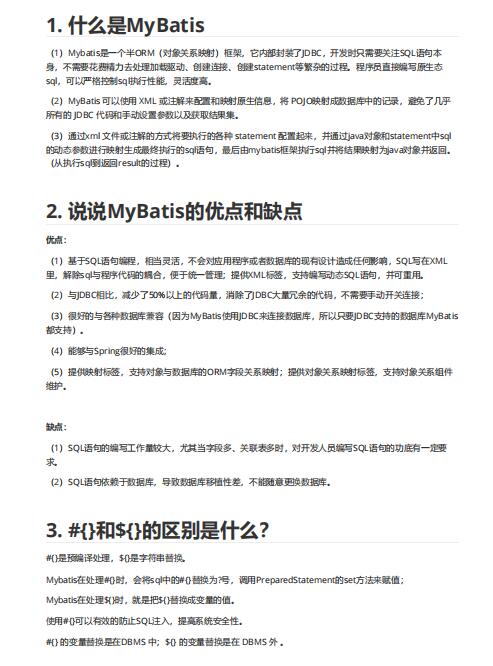
资料内容:
3. #{}和${}的区别是什么?
#{}是预编译处理,${}是字符串替换。
Mybatis在处理#{}时,会将sql中的#{}替换为?号,调用PreparedStatement的set方法来赋值;
Mybatis在处理${}时,就是把${}替换成变量的值。
使用#{}可以有效的防止SQL注入,提高系统安全性。
#{} 的变量替换是在DBMS 中;${} 的变量替换是在 DBMS 外 。
4.当实体类中的属性名和表中的字段名不一样 ,
怎么办 ?
第1种: 通过在查询的sql语句中定义字段名的别名,让字段名的别名和实体类的属性名一致。
<select id="selectorder" parametertype="int" resultetype="me.gacl.domain.order">
select order_id id, order_no orderno ,order_price price form orders where
order_id=#{id};
</select>
第2种: 通过来映射字段名和实体类属性名的一一对应的关系。
<select id="getOrder" parameterType="int" resultMap="orderresultmap">
select * from orders where order_id=#{id}
</select>
<resultMap type="me.gacl.domain.order" id="orderresultmap">
<!–用id属性来映射主键字段–>
<id property="id" column="order_id">
<!–用result属性来映射非主键字段,property为实体类属性名,column为数据表中的属性–>
<result property="orderno" column ="order_no"/>
<result property="price" column="order_price" />
</reslutMap>

